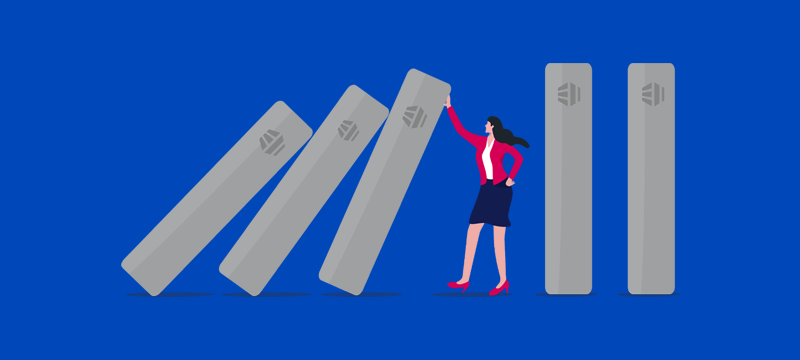With small businesses increasingly relying on digital technology, they need to be prepared to deal with the various disasters that can strike, often out of nowhere. In this post, we look at what kind of disasters can happen and explain how firms can put a disaster recovery plan in place to protect themselves.
Disaster risks
The two most common types of disaster are system failure and data loss. Systems can fail for a number of reasons, including cyberattacks, like ransomware, malware and hacking, as well as software corruption and server failure. When a system goes offline, small businesses will suffer from downtime, lost revenue and damage to their company reputations, so the sooner they can get the system back online, the less the overall damage will be.
One of the chief reasons businesses is going digital is to make use of valuable data. For this reason, data loss is more damaging than a system failure because, if the data is permanently gone, system recovery on its own won’t be sufficient to restore digital operations.
It’s like mending a record player without having any records to play on it. If data is lost, businesses will lose customer information, order, sales, shipping and accounting records and monitoring and tracking data. This can cause chaos with customers, stifle decision making and paralyse operations.
Why you need a Disaster Recovery Plan
While the risk of your business premises burning down might be minimal, you’ll undoubtedly have buildings and contents insurance to protect you from catastrophe, just in case. A disaster recovery plan is very much like an insurance policy for your system and data in case the unexpected happens. It puts in place procedures to minimise disaster and, crucially, the solutions to recover quickly from it.
Features of disaster recovery
As data loss can cause the most damage, a crucial feature of disaster recovery is making sure that you have more than one copy of all your data. This way, if all the data on your server is wiped out, you can use the other copy to restore it. It is vital, therefore, that you back your data up.
However, as the data businesses collect is continually updating and being added to, an out of date backup might not be sufficient for a company’s needs. A day-old backup, for example, won’t include all the online orders taken during the last 24 hours. It is important, therefore that you have a backup solution that takes backups as needed.
At eukhost, for example, our backup plans let you schedule backups to take place at the frequency to suit you and they’ll be tested for integrity and encrypted. This means that if you need to restore, your data and even your entire server if needed, will be up to date, uncorrupted and will work, giving you the assurance of a swift recovery.
The speed at which you can recover your system, meanwhile, can depend on your infrastructure. If your system is run on a physical server, like shared hosting or a dedicated server, issues like drive failure mean your system may be offline until the hard drive is replaced and the software and data are reinstalled. You can shorten the recovery timeline by having redundant hardware in place to bring online as a backup, but this can be a very expensive solution.
A much quicker and more cost-effective solution is to run your systems on virtual servers, e.g., in the cloud or on a VPS. As virtual servers are independent of the hardware on which they run, if there is a hardware issue, the virtual server can quickly be moved to another physical machine.
With VPS, this can be done in the time it takes to boot up a new server, while in the cloud, it happens instantly. If you have a backup of your entire server (i.e., operating system, applications and data) recovery, even from ransomware or hacking, can be achieved as soon as the server backup is restored.
Recovery time and point
When creating a disaster recovery plan, it is important to set two different objectives. The first is the recovery time, i.e., how quickly you need to get back online. This depends on how long your business can reasonably afford to wait to get systems fully functional.
The second objective is your recovery point. In other words, how recent does your latest backup need to be? Understanding how both will affect your business will help you set the correct recovery targets and create a plan that sets out to achieve them.
Conclusion
Small businesses have little choice but to adopt digital technology and make use of data and their reliance on it will increase as the digital revolution moves forward. To prevent disaster from system failure or data loss, a disaster recovery plan is essential, and this must ensure that your systems are run on the most appropriate infrastructure and that you have a fully adequate backup solution in place. For more information about our VPS, cloud and backup solutions, visit our homepage.



